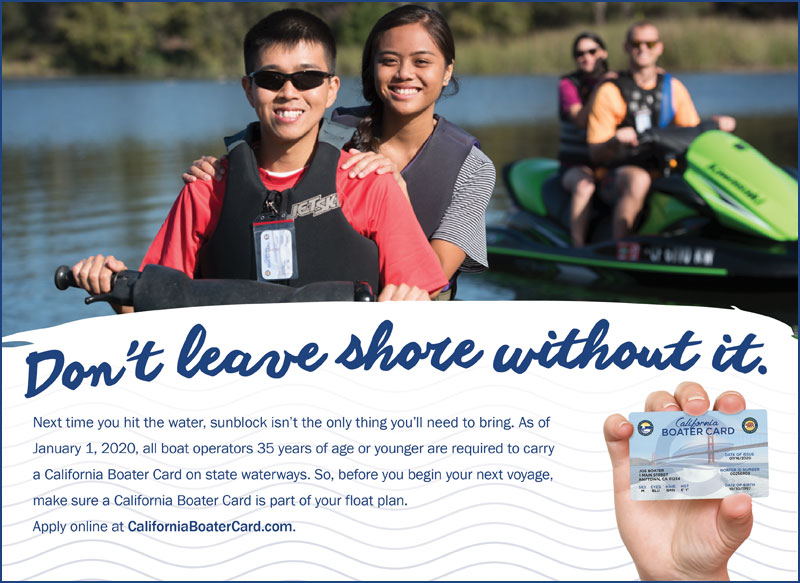
Proving You Can Still Have Fun Sailing in Light Air
Although this weekend’s forecast is for light winds, the prospect of a sunny Saturday will hopefully have many of us taking to the Bay for a day, or at least a few hours, of fresh air and casual cruising — perhaps even a stopover in a favorite anchorage. And to prove you can still have fun in light air, here are some photos Dustin (Dusty) Adams sent to us of his Thanksgiving sail around Moss Landing aboard his Farallon 29 Ol’ Wayne, in only 5-10-knot winds.
“It was a great sail, with the wind 5-10 knots from the west. We cast off around 12:30 p.m. and tied back up around 3:30 p.m., just sailing a while upwind and enjoying the nice downwind (downwind was especially sunny with no mainsail in the way).”
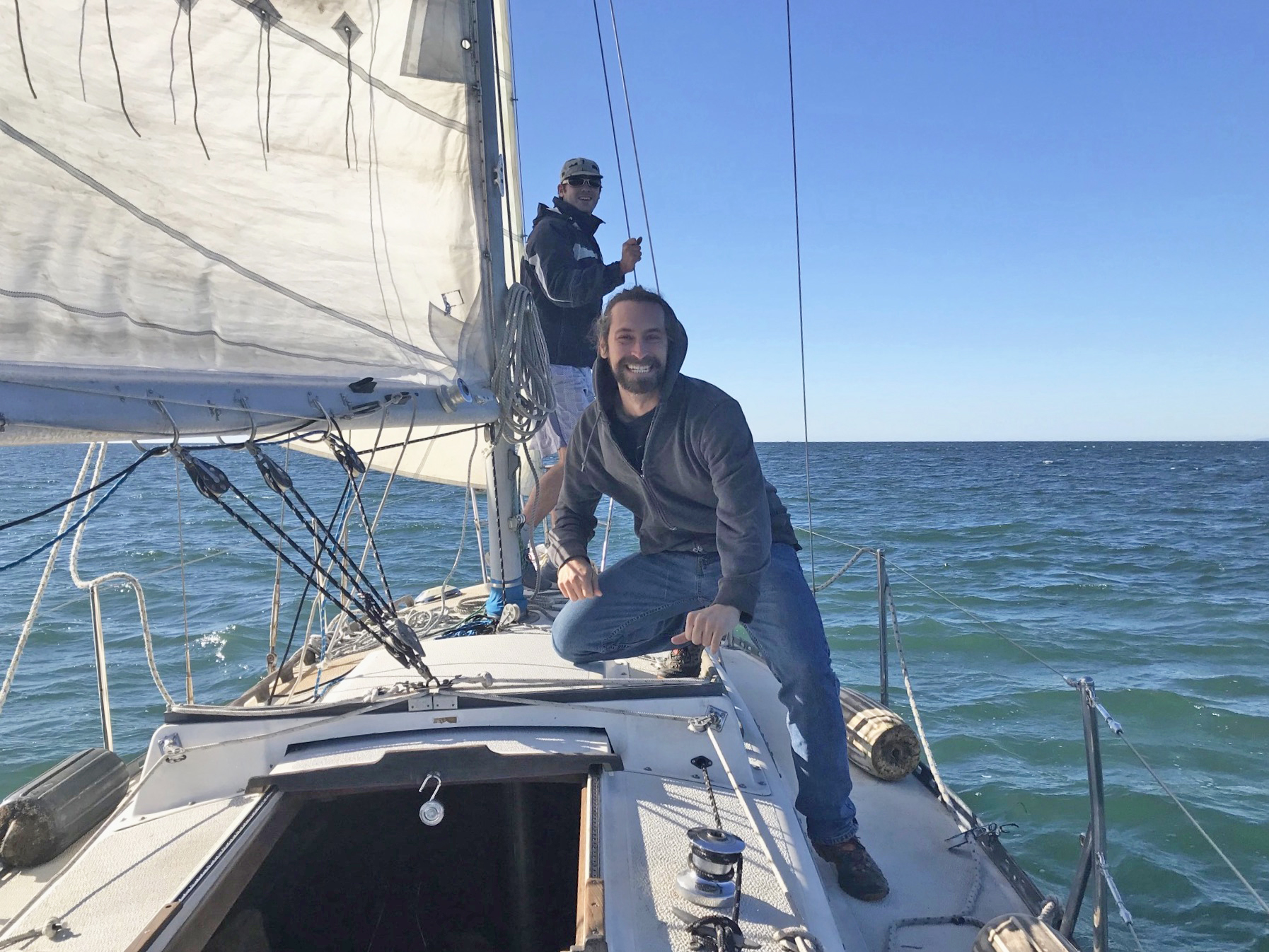
Ol’ Wayne was built in 1976 and was what Dusty calls a “necessary COVID purchase.”
“She’s still fairly new to me, but my various friends and I have taken her out close to 20 times by now. When I bought Ol’ Wayne her name had been painted over a while back, and I haven’t officially rechristened the boat, but that is coming up soonish.”
After buying Ol’ Wayne in Oakland, Dusty and his friends sailed her around the Bay for a few months, “sometimes rounding Alcatraz if we left early enough in the day, which usually wasn’t the case.”
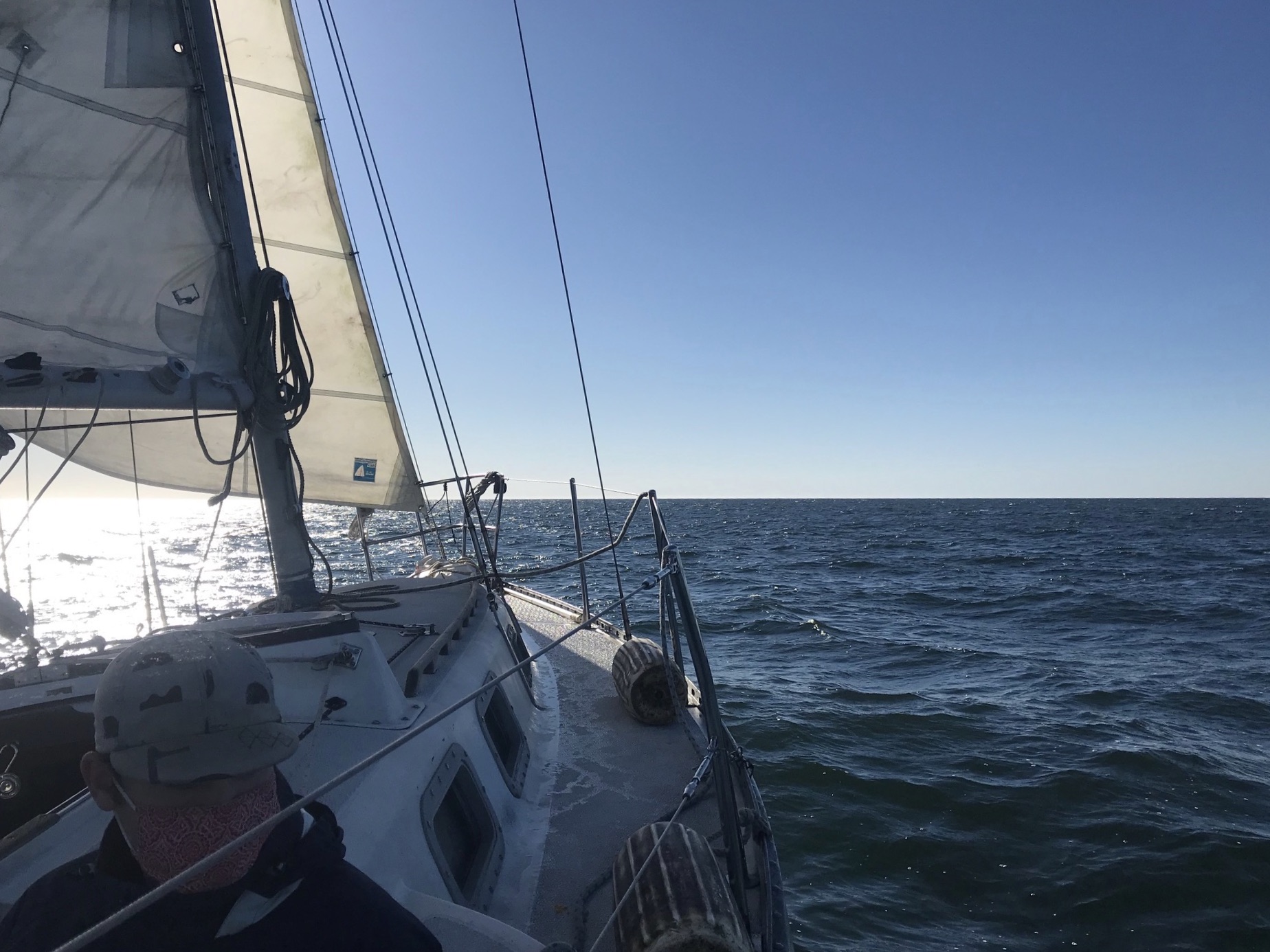
“Then Rachel, Cassidy and I sailed Ol’ Wayne down to Moss Landing on a beautiful four-day sail during Memorial Day weekend, back when there was a heat wave. It was 85 degrees in Half Moon Bay with winds of 15-20 knots, possibly the best day of sailing I’ve ever experienced on the West Coast. Otherwise Rachel and I will usually try to assemble a crew of the usual suspects, go out of Moss Landing for a few hours, and come back. Moss Landing is my favorite sailing in Monterey Bay (as long as the tide isn’t going out when we’re coming back in).
“We’ve overnighted at Horseshoe Cove in Sausalito, Half Moon Bay Harbor (anchored not slip), Santa Cruz Main Beach Anchorage and Santa Cruz Harbor (the Santa Cruz overnights were separate).”
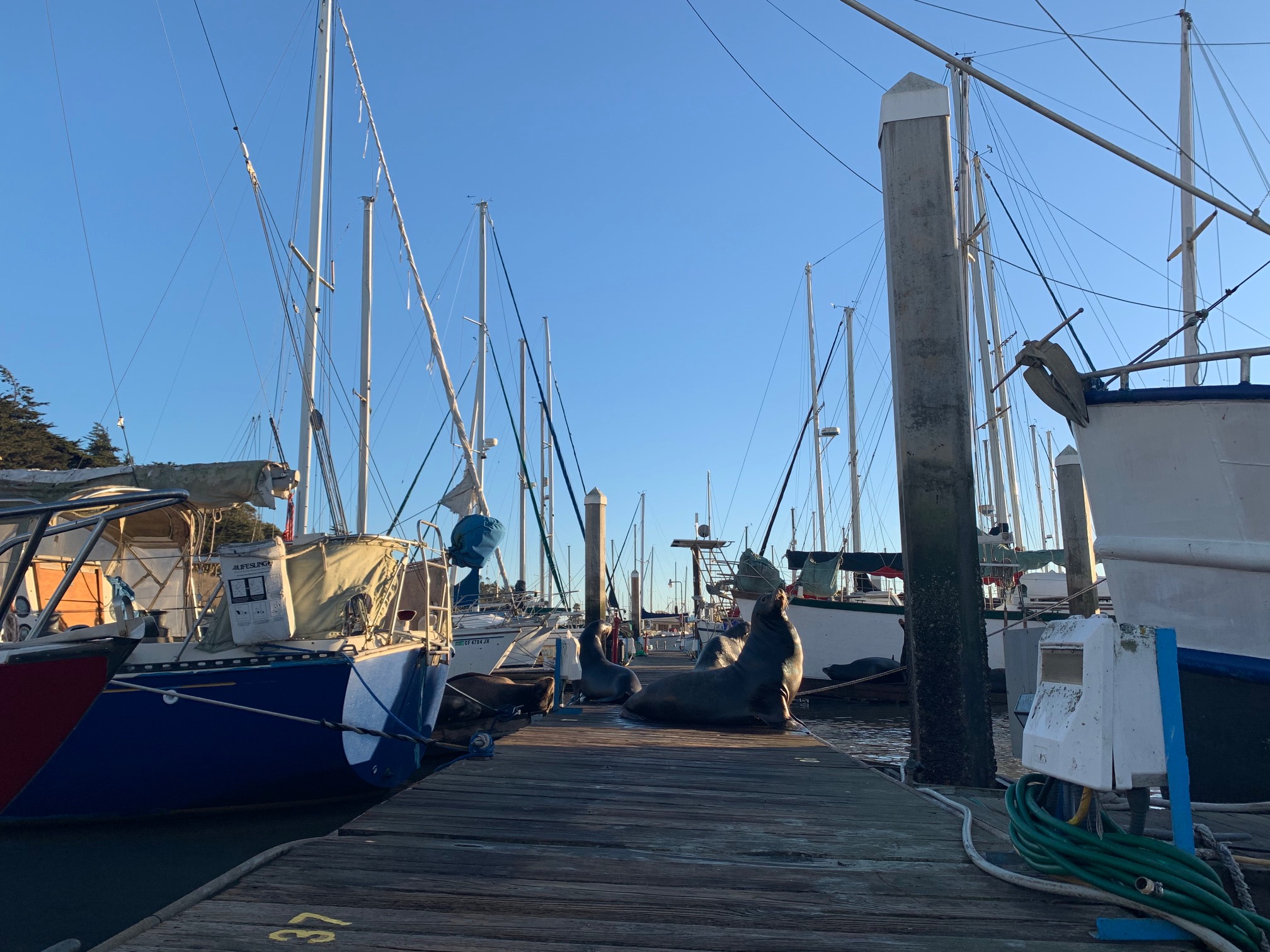
Dusty is a member of UC Santa Cruz Sailing Club (as an alumnus) and was also a member of Pacific Yachting “for one year back in 2014.”
“I officially learned to sail at UC Santa Cruz Sailing Club with Rusty Kingon and Hillary Scheerer in 2012 with their fleet of Coronado 15s. Then I moved on to sailing with their Santana 22, Santa Cruz 27, Olson 30, and their (now sold) Morgan 32, learning the spinnaker with their racing boats and learning the various systems with their Morgan 32 (with some occasional sails SC to Monterey and back). I got my ASA bareboat license in 2014, and have been sailing religiously ever since.”
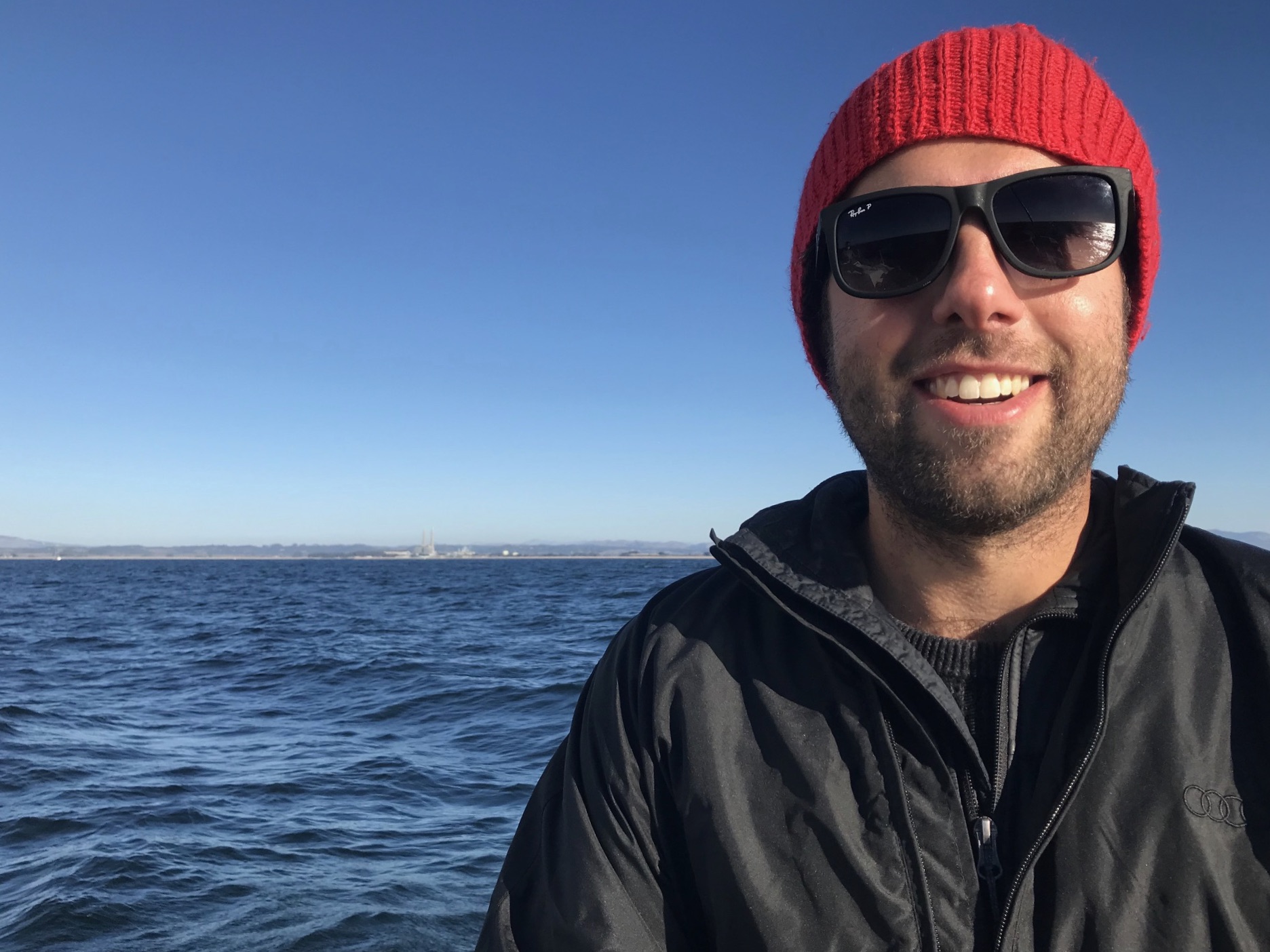
In the future Dusty hopes to sail his way to Pt. Reyes and Drake’s Bay “anchorage-/harbor-hopping our way up,” and from there sail around the Farallones.
“Gotta round the Farallones in a Farallon 29. I would love to take Ol’ Wayne down to the Channel Islands and spend a couple weeks down there but it’s hard to think about how to get Ol’ Wayne back to the Monterey Bay without spending a ton of time or a ton of money.”
What Have You Been Watching and Reading?
Some of us here at Latitude have long been cinephiles and bookworms, but getting our hands on good content during the pandemic has been a silver lining during a year of dark clouds. What follows are a few samplings of what we’ve been watching/reading recently, but naturally, we’re curious what’s been on your screen/bookshelf. Please comment below, or email me here. I’ll try to wear our critic’s hat and be objective, if for no other reason than an exercise in the art of critical thinking. But truth be told, I really enjoyed everything that follows.
80 North Series — The Delos Project
In summer 2018, we exchanged a few emails with the crew of SV Delos for a two-part ‘Lectronic series. (Read Part 1 here and Part 2 here.)
“At the end of June we are headed to Svalbard, an arctic archipelago [lying] about 82 degrees north!” wrote Brady Trautman. “We are joining our friends from the podcast 59-north.com and we will try and sail their yacht, Isbjorn, a Swan 48, around the entire group of islands. The island has more polar bears then people! I don’t think I have ever been excited about a filming adventure like this. We aren’t exactly sure what will come from it but I have a feeling it will be something special.”
What came from that trip is the recently released 80 North Series, consisting of four half-hour-ish episodes.
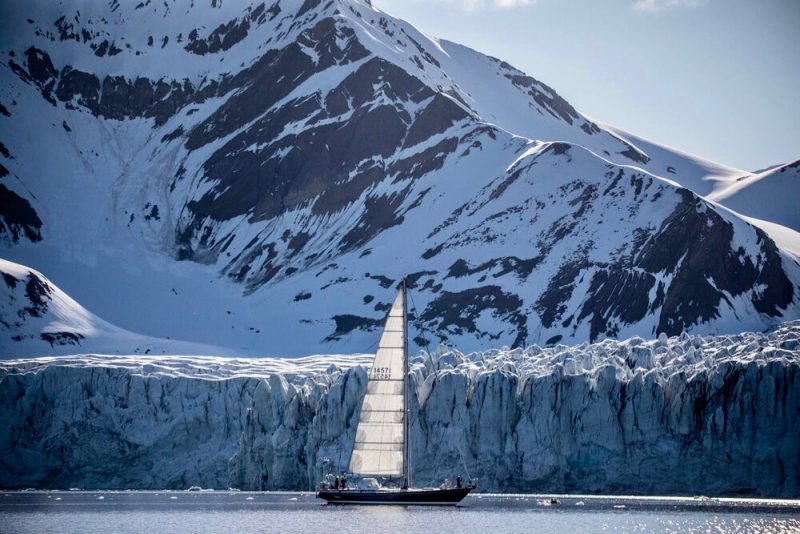
80 North is stunning. The eight-person crew of Isbjorn often characterized Svalbard as “alien,” or something akin to sailing on another planet. The boat feels as if it’s in a snow globe, with mountains and glaciers constantly rimming the ocean. 80 North has a slightly higher production value than the “normal” Delos episodes, as well as an outside narrator. The crew seems in unwavering awe of their cruising grounds.
There are polar bears and walruses and whales. There is history describing the abandoned coal mining settlements. There is hiking and ice climbing. There are cruise ships and scientists from all over the world partying on the summer solstice.
The crew even flies a spinnaker.
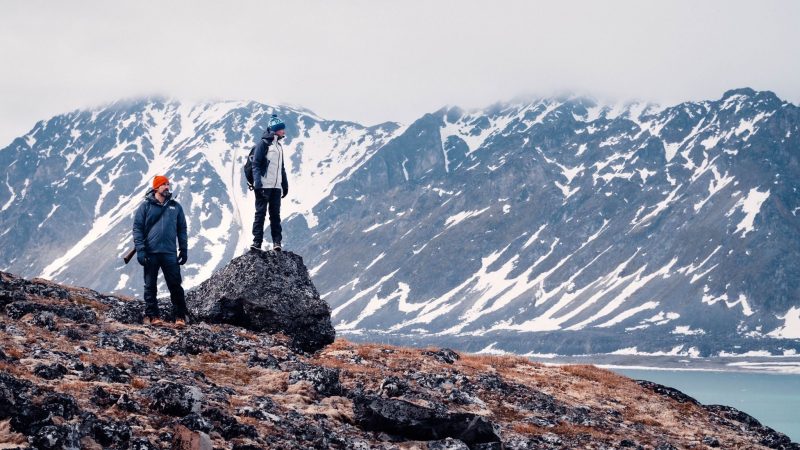
I found myself almost having “spectacularity fatigue.” Returning to the snow globe analogy, the boat often felt as if it was always in the same place. (If you’ve seen one breathtaking mountainscape, you’ve seen them all. Lol.) Many of the crew commented on how “mild” the weather was. I suppose I was expecting slate-gray, 30-ft seas and snow flurries, but instead it was omni-sunshine, though the crew was always dressed, head to toe, in down and foul weather gear.
80 North made clear that Delos‘ crew are master storytellers. It’s amazing to see how a YouTube channel has evolved with 10 years of experience and the latest in cameras and drone technology. (The 80 North Series asks viewers to “pay what’s fair,” and though I’m not a Delos Patron, I was more than happy to pay for their content.)
In 2018, I asked Brady Trautman if the Delos contingent — who often conduct interviews with sailors, scientists and historians — see themselves as de facto journalists or documentarians. “The interviews and more journalistic style is something I have personally always loved. Telling someone else’s story is a great way to be creative aside from our ‘normal’ episodes. I do see a lot more of this in our future.”
Vela — John John Florence
Last summer, two-time world champion surfer John Florence, along with his brother Nathan and crew, set sail for Palmyra Atoll aboard Vela, a 48-ft Gunboat catamaran. Florence had re-injured his knee, forcing him to withdraw from the 2019 world tour, which he’d been dominating, to undergo surgery on his ACL. The silver lining of the injury was that Florence had time to sail.
Vela, a four-part, 15-ish-minute episode series, follows the crew to the Line Islands, sitting on the equator, roughly 1,000 miles south of Hawaii. Florence’s mission was to visit with scientists on Palmyra to discuss that island’s wildly successful conservation efforts.
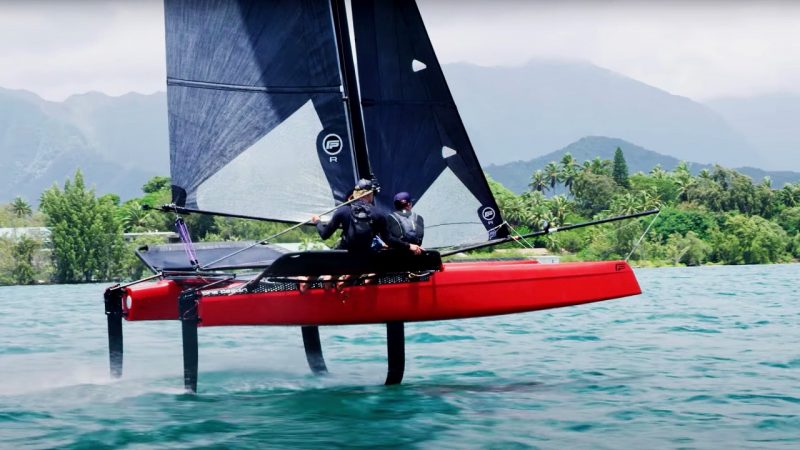
Palmyra was occupied by the Navy during World War II, before being abandoned. “Much of the Naval Air Station was demolished, with some of the materials piled up and burned on the atoll, dumped into the lagoon, or in the case of unexploded ordnance on some islets, left in place,” according to the Wikipedia history.
But the crew of Vela found a healthy, thriving ecosystem. “When you let nature do its thing, and if you give it the chance to have that resilience and come back to health, it will,” Florence said. “But you have to give it the opportunity.”
In a time full of bad news and ominous environmental portents, it was refreshing to see and hear something so positive.
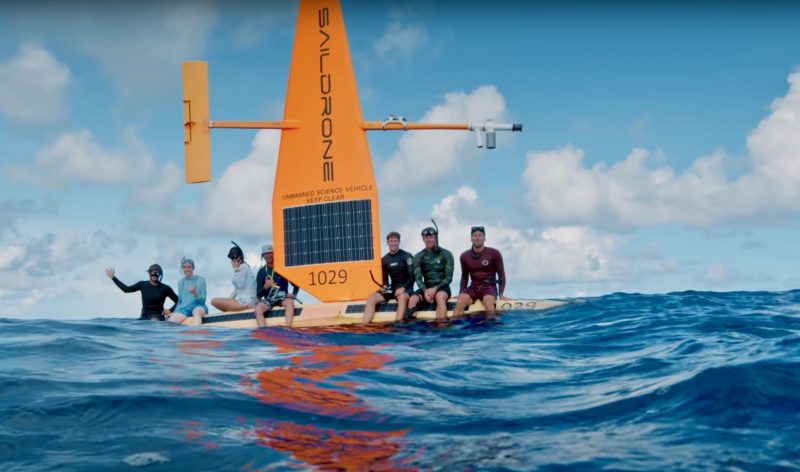
A female sailor friend of mine said she found the first episode too “bro-y.” There are several scenes of young, handsome surfers listening to scientists, and at times the “science” feels a bit perfunctory. But how do you “show” environmentalism, and how do you convey important information critical to the survival of the planet? I think the producers of Vela did well to balance sailing, beautiful underwater scenes, surfing, and life aboard an oceangoing boat with interludes of ecology.
John Florence also has a short video of him and his wife Lauryn doing some doublehanding around Oahu, as well as the video Crossings, featuring waterman extraordinaire Kai Lenny. (For those of you fully going down the rabbit hole of this article, I suggest this four-minute-44-second video of Lenny surfing Mavericks, here in the Bay Area, in late December.)
Chesapeake — James Michener
“I first sailed upon the Chesapeake in 1927 and was a frequent passenger thereafter,” James Michener wrote in the “acknowledgments” of his 1978 novel Chesapeake. “From my earliest days on the bay I considered writing about it, but always postponed beginning until such time as I could live along its shores for some extended period.”
A thousand-page novel? No problem during the pandemic and reduced employment. One might need to be in the proper mood for Michener: A story that’s sweeping and epic, Chesapeake was all of this and more, following multiple families from indigenous nations, to the first colonists, to the Revolutionary and Civil Wars, all the way up to Watergate (yes, Watergate).
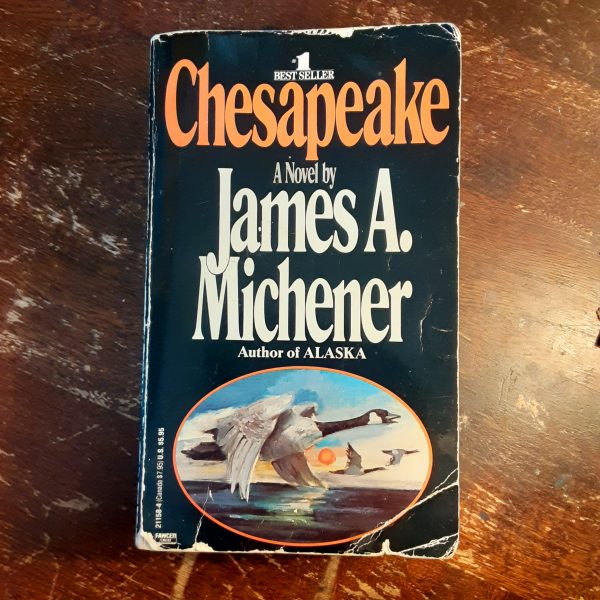
In true Michener form, he devotes a chapter to geese, following their migration from the Arctic to the Chesapeake, and another chapter to crabs, following their molting of shells.
There’s quite a bit of sailing, too. Consider this quote:
“For two days the men planned the vessel that was to become the hallmark of the Paxmore yards: sleek, swift, maximum canvas, minimum beam, sharply formed bottom, lively tiller, fantastically protruding bowsprit. It was to be a schooner defined by a businessman, executed by a poet, and at every critical point each man made his decisions in reference to a view of the future that he had constructed after the most careful analysis of what he saw happening in the colonies.”
A college professor once chuckled at my adoration of Michener, implying (I think) that his prose was a tad dated and dusty. That might be true, but for me, Michener is comfort reading — you know what you’re going to get, and it’s always wonderful.
Division of Boating and Waterways Boater Card
Organizers Scramble for This Weekend’s Races
As Bay Area (and beyond) stay-at-home orders continue (indefinitely for now), regatta organizers have scrambled to adjust. As we noted in previous posts, clubs either canceled or postponed races from mid-December into early January. Adjustments continue for this weekend.
On the Berkeley Circle
As in December, RegattaPRO has canceled Saturday’s Winter One Design to have been held on the northwest part of the Berkeley Circle. Remember that they already extended the series into March.
Berkeley YC’s Midwinters will proceed on both days this weekend, but with adjustments for racers and race committee alike. “Household/Crewed Divisions are canceled for January 9 and 10, 2021,” reads the amendment. “The signal boat will have only two people of the same household.” The volunteers will signal starts via VHF. The Doublehanded Division crews (including the Doublehanded Express 27s) must consist of two people from one household.
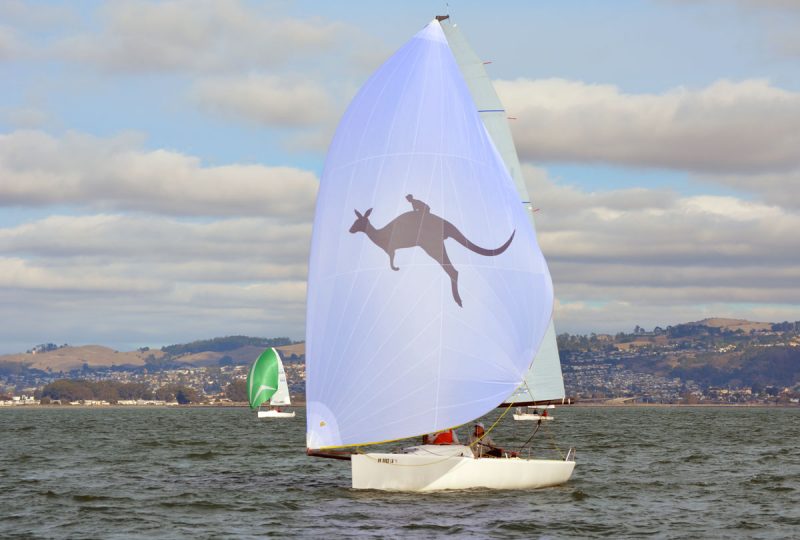
On the Estuary
Island YC has chosen a tactic similar to Berkeley’s for their race on Sunday the 10th. “Through discussion with the YRA, US Coast Guard and other clubs, we believe that we can continue to run our Island Days series, albeit with a few changes to our race procedures and crew rules,” Nathan de Vries wrote yesterday. “The key change we’re making is to allow only singlehanded or doublehanded crews to race. Doublehanded crews must be co-habiting in the same household (i.e. no ‘social bubbles’). In addition, we are scaling back our race committee. Both these measures are to eliminate cross-household mixing.”
Sequoia Yacht Club in Redwood City has canceled their Winter Series #3 race and replaced it with a Single Household Fun Race tomorrow, Saturday, January 9. This will be the second such race, as Sequoia held the first Single Household Fun Race in place of the Redwood Cup race on December 19.
On Monterey Bay
Moore 24 skipper Sydnie Moore checked in from Santa Cruz YC with this update: “December’s Midwinters Race was canceled due to COVID restrictions. We are hopeful for January 16, but have not heard if it will happen. We are going to try a Winter Window Timed Regatta: Pick a date, do the course, compete. Also some interesting speakers for the public to tune in to on WISS.” WISS is a virtual Winter Informational Seminar Series. January’s seminars are:
- Wednesday, January 13, Dan Byrne will present Novice to Captain: A Corinthian Success Story.
- January 20, US Sailing Area G regional administrative judge Mike Gross will present Changes to the Rules of Racing in 2021.
- January 27, Darci Bogdan will present From Childhood Crew to Captain of the Chardonnay.
Contact the club to request a link.
News from the Future
Looking ahead to spring, here’s a snippet of good news: California Offshore Race Week will return. They had to cancel it in 2020, but the organizing clubs — Encinal YC, Monterey Peninsula YC, Santa Barbara YC and San Diego YC — plan to host the event this year from May 29 through June 5. As in 2019, the first race will be the Spinnaker Cup from San Francisco Bay to Monterey, followed by the Coastal Cup to Santa Barbara, an in-port race there, then the SoCal 300 to San Diego. Organizers will offer the CA 500 from San Francisco to San Diego too. Find details and the Notice of Race at https://offshoreraceweek.com.
Mark Reid Interviews American Magic’s Terry Hutchinson
Magic Moments
The anticipation is over. We’re ready to experience some of those magical moments by American Magic, our ‘home’ team. American Magic represents New York Yacht Club and has pledged to bring the America’s Cup back to Newport, Rhode Island, if they’re successful.
American Magic skipper Terry Hutchinson has reason to feel optimistic, given Patriot’s performance last month in the AC World Series. The downwind flyer was on pace in many respects, as they handed all three of the other teams at least one loss.
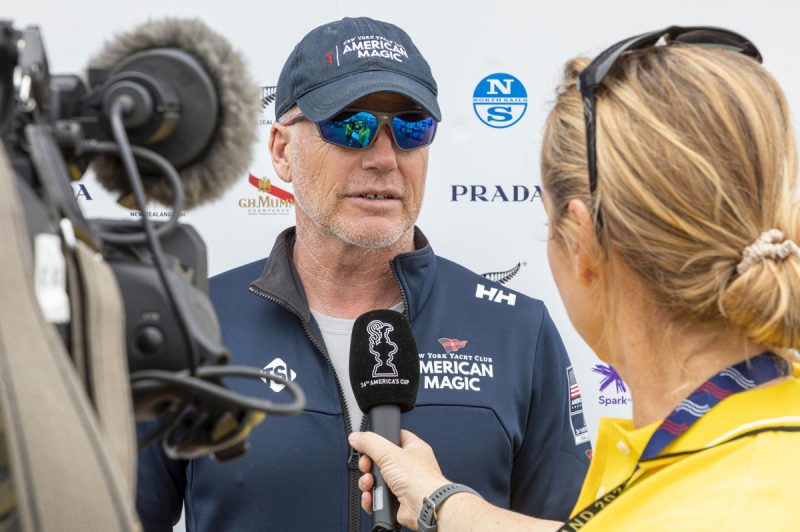
Hutchinson is one of the most respected match racers and tacticians in the world. He’s a veteran America’s Cup competitor, having competed in five America’s Cup cycles. As tactician for Emirates Team New Zealand in 2007, he helped the team reach the America’s Cup finals alongside Dean Barker, who is now the helmsman for American Magic. Hutchinson, 52, lives in Harwood, Maryland. He’s a two-time US Sailing Rolex Yachtsman of the Year and a 16-time world champion.
Nothing sums up his intensity, and epitomizes his leadership, more than how he described finishing a close second with Barker in the 2018 Congressional Cup: “If you don’t win the last race, it isn’t a very good regatta. What doesn’t kill you makes you stronger.”
Terry took a few moments out of his busy schedule to talk with us earlier this week about the progress that American Magic has been making, and to reflect on the challenges that got them to this point.
Can you give your impressions of the recent ACWS?
We learned where Patriot stands against the fleet, which we didn’t know before. You look around and there are a lot of other good development ideas on other boats. You are always analyzing and comparing what you have versus the three other teams. It is good to see some of our ideas that are working. We can possibly grab onto some others and then bring them into our own program.
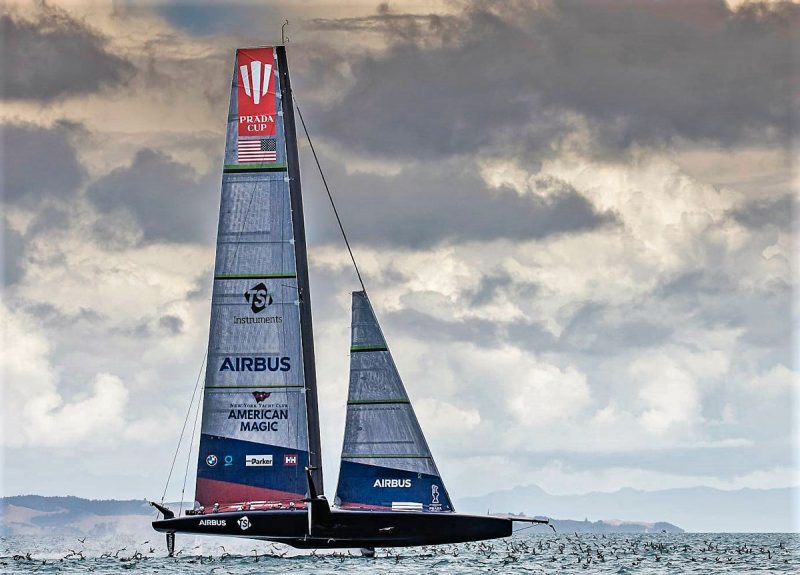
Each team is limited to three sets of foils, and you can only modify them 20%. What can you do between now and the start of the Prada Cup?
Well, at least 20% worth! I can’t speak for the others, but we have a set path of development that we are on, and if we chose to change the wings 20% we would; and if we don’t, we will leave them as is. 20% over the course of a foil is quite a big part of the section! A pretty big change. The foils themselves are pretty complicated and the systems inside of them are complicated, so you’re not going to do a modification or change willingly.
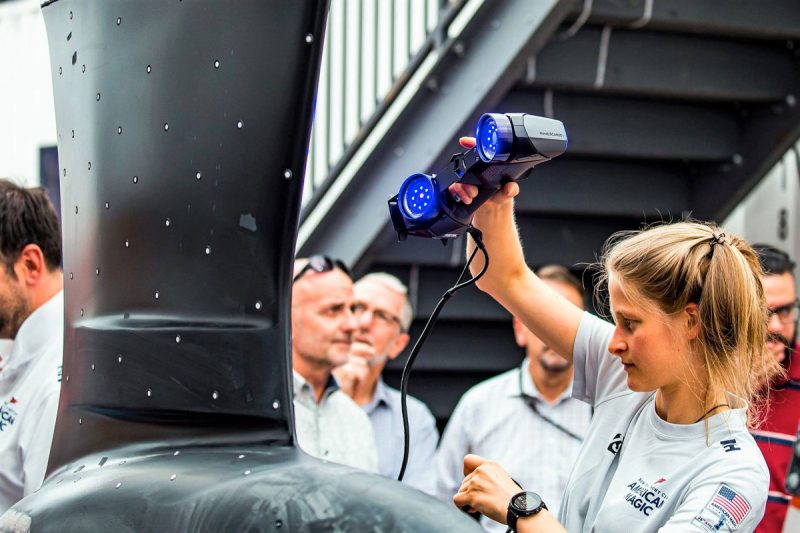
Is there too much technology in these boats?
It’s just different, it doesn’t mean it’s too much or not enough. Once you get your head wrapped around the fact it’s just different, then you adapt to what you’re doing and what you’re using. You’re just learning a different skill set. It’s a new learning opportunity.
In some capacity, what we’re learning here will transfer down to the mainstream of the sport. In some ways you might be able to use a little bit of it here and there in high-end racing. You need to learn what to do because you just don’t hop on these boats and go racing. Going out and winning a regatta in a traditional monohull has no comparison to what we’re doing.
Once you get it to a spot that you’re racing the boat well and sailing the boat hard, then it starts translating into other areas of the sport. But you are still making decisions at closing speeds of 80 mph between two boats! It is quite exciting!
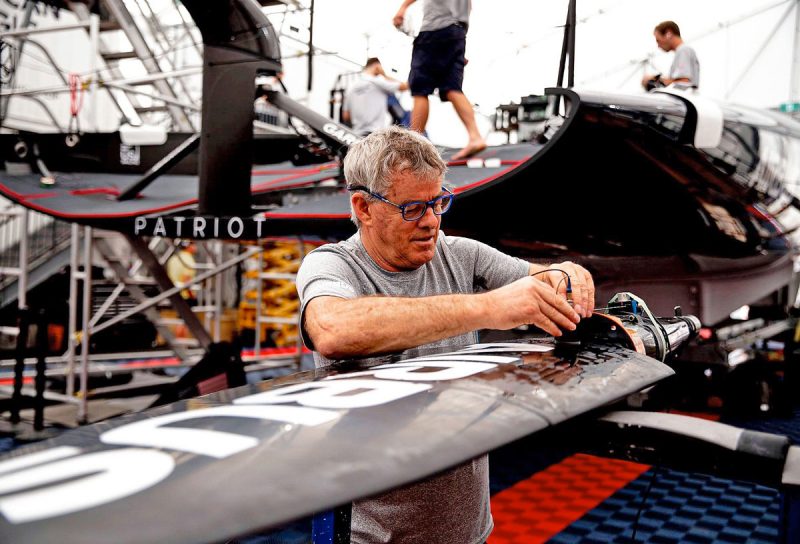
How did your team’s training on the Mule (the AM38 test boat) transfer to Defiant and Patriot?
All of the boats have played a part in the development of Patriot. The Mule was about as much as getting our entire team up to speed as it was getting our sailors up to speed, and it was about learning about the foiling monohull. The sailing side of the competition is a very small part of it. There are just 11 guys on the boat, but there are 100 people working behind those 11 guys.
The Mule was worth its weight in gold, in so many ways!
Defiant was designed for one part of the [AC75 box] rule space, and Patriot was designed for another area. When we built Defiant, we had very little time with the class rule, so when Marcelino Botin (the designer) worked around different ideas and concepts, he always knew that there was another boat to come.
You design your boat, but you also use your reconnaissance and your observations of the other teams to develop ideas. The day Defiant’s lines and drawings were delivered, Marcelino started working on Patriot, so he had the better part of a year and a half to design that hull.
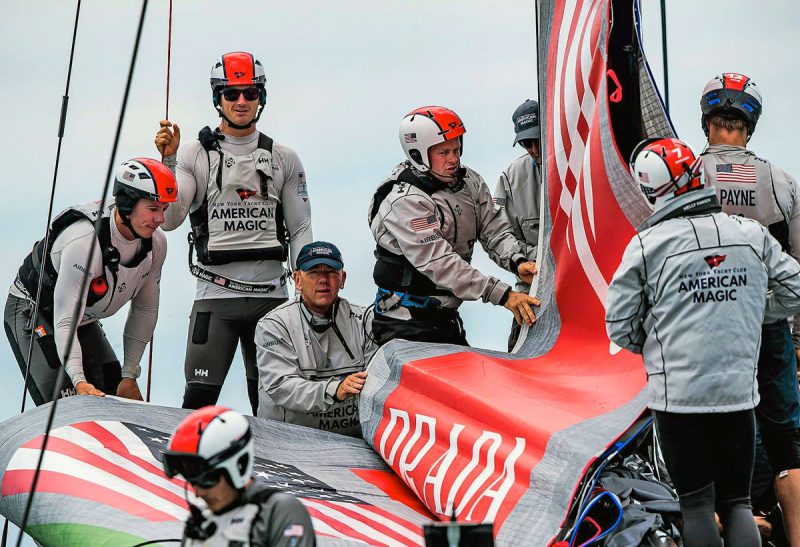
You and your team have faced many challenges in the past year, with COVID-19 and getting your boat into New Zealand. What was the most concerning issue for you and your team?
When we look back to March, when the whole worldwide pandemic started to explode, we had a couple of real hard decisions to make and we had to be aggressive with them.
The first one was whether we put the boat on a ship and send it to Italy with zero certainty. We made the decision not to do that, under the great leadership and input from our principals, Hap Fauth, Doug DeVos and Roger Penske.
We kept Defiant in a position ready to sail for the whole month of April, but we didn’t sail out of respect for protecting everybody’s health and the safety inside of our team plus the entire Pensacola, Florida, community.
Also, out of respect for what was going on, we just felt it was wrong to be out training and sailing when things were going so pear-shaped. We felt we had a bigger responsibility to the community we were living in.
From there we sent all of our assets and equipment to New Zealand — with absolutely no guarantees we were going to be allowed in the country. Defiant arrived on June 26. After the Avatar (movie) group, we were the next wave of people coming into the country. That was a pretty big sigh of relief, but that wasn’t a guarantee as to when we were going to get sailing.
We had always targeted the third week of July to start sailing, which was pretty aggressive pre-COVID-19. But in typical fashion, the team members who were already in New Zealand had unloaded Defiant and in three weeks had literally built the base and got it operational. On the 27th of July we relaunched Defiant and went sailing!
I can assure you before that there was not a lot of sleeping taking place, because everything we had worked on was in jeopardy. We were fortunate that we were able to sail for three months before another challenger hit the water.
And now?
We are happy that we planned well and we executed on the goals that we had set for ourselves. We are all just heads-down and focused on what we need to do. We’re all just doing what our principals expect of us and what we all expect of each other.
Notice to Mariners Needing Fuel from Oakland Marinas
Oakland Marinas harbormaster Brock de Lappe wants Oakland Estuary boaters to know the Jack London Square fuel dock will be closed beginning Wednesday, January 13, for the installation of new fuel lines.
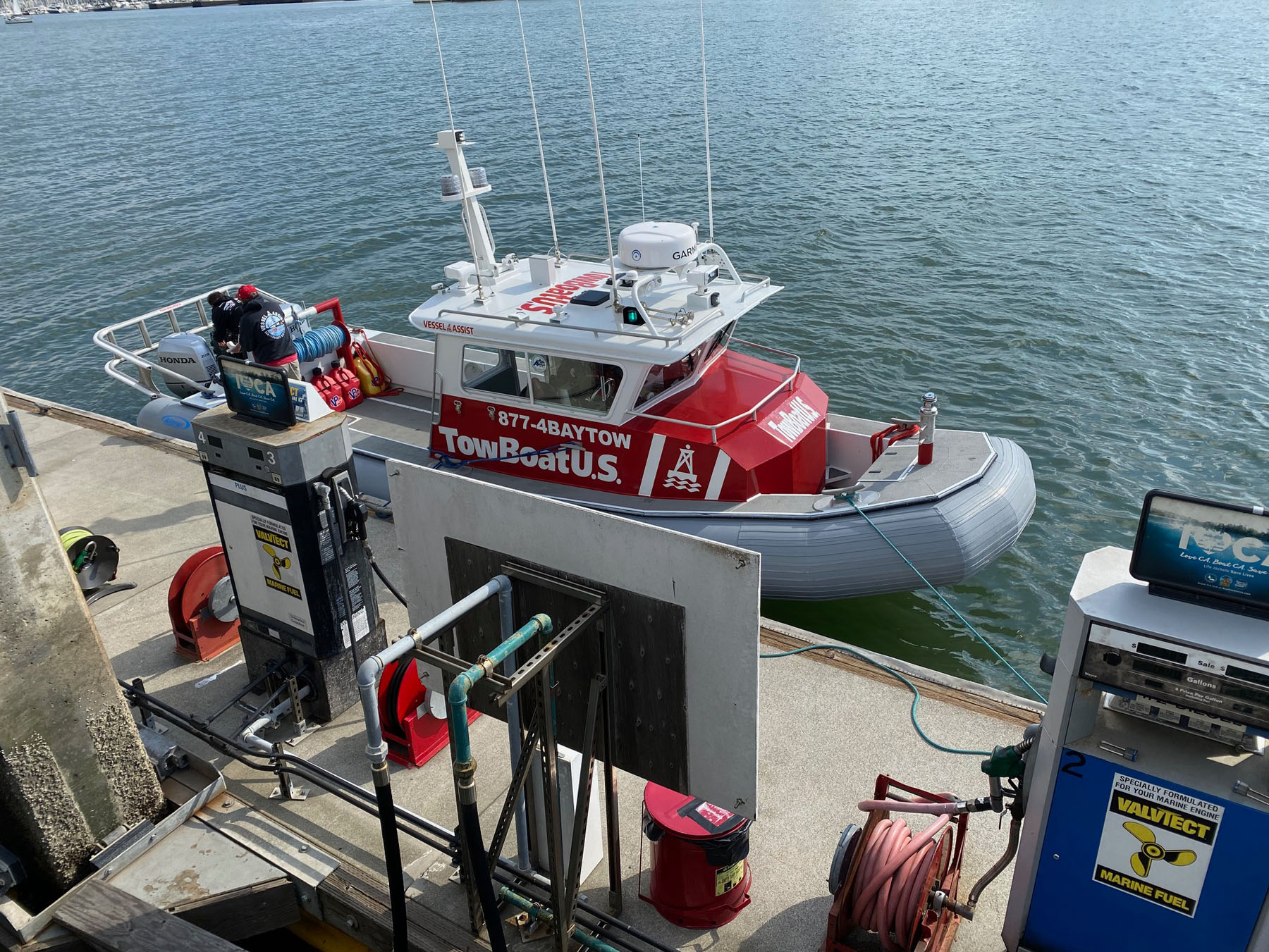
According to de Lappe, the job is expected to last approximately two weeks, but, of course, is also weather-dependent, so the reopening date is somewhat uncertain. They are presently only able to sell diesel, though after the project, gasoline will also be available again.
In case you don’t get there this weekend, or need gas instead of diesel, the nearest alternative fuel docks are Ballena Bay in Alameda and the Emeryville and Berkeley marinas. If you have questions, you can contact the Oakland Marinas office at (510) 834-4591 for any additional information. In the meantime, be happy you have a sailboat and therefore an alternative means of propulsion.

